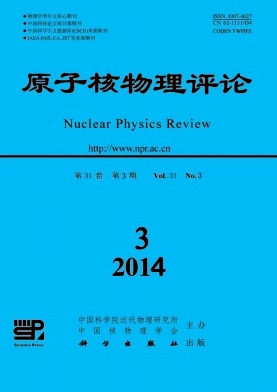Burnup Measurement Study and Prototype Development in HTR-PM
doi: 10.11804/NuclPhysRev.31.03.366
- Received Date: 1900-01-01
- Rev Recd Date: 1900-01-01
- Publish Date: 2014-09-20
-
Key words:
- HTR-PM /
- burnup measurement /
- Monte Carlo simulation /
- HPGe /
- activity
Abstract: In a pebble-bed core which employs the multi-pass scheme, it is mandatory to determine the burnup of each pebble after the pebble has been extracted from the core in order to determine whether its design burnup has been reached or whether it has to be reinserted into the core again. The burnup of the fuel pebbles can be determined by measuring the activity of 137Cs with an HPGe detector because of their good correspondence, which is independent of the irradiation history in the core. Based on experiments and Geant4 simulation, the correction factor between the fuel and calibration source was derived by using the efficiency transfer method. By optimizing spectrum analysis algorithm and parameters, the relative standard deviation of the 137Cs activity can be still controlled below 3.0% despite of the presence of interfering peaks. On the foundation of the simulation and experiment research, a complete solution for burnup measurement system in HTR-PM is provided.
| Citation: | YAN Weihua, ZHANG Liguo, ZHANG Zhao, XIAO Zhigang. Burnup Measurement Study and Prototype Development in HTR-PM[J]. Nuclear Physics Review, 2014, 31(3): 366-373. doi: 10.11804/NuclPhysRev.31.03.366 |






 甘公网安备 62010202000723号
甘公网安备 62010202000723号 DownLoad:
DownLoad: